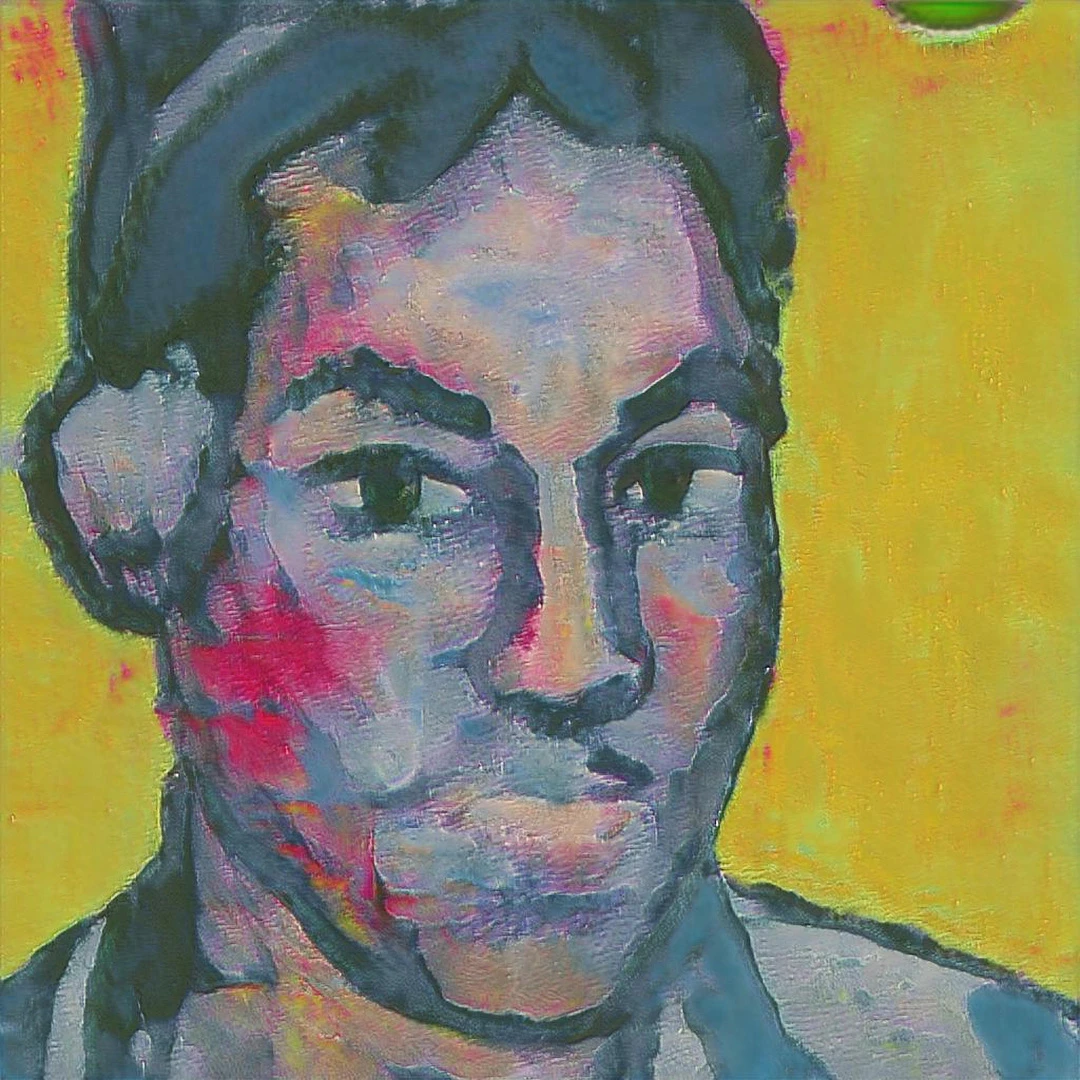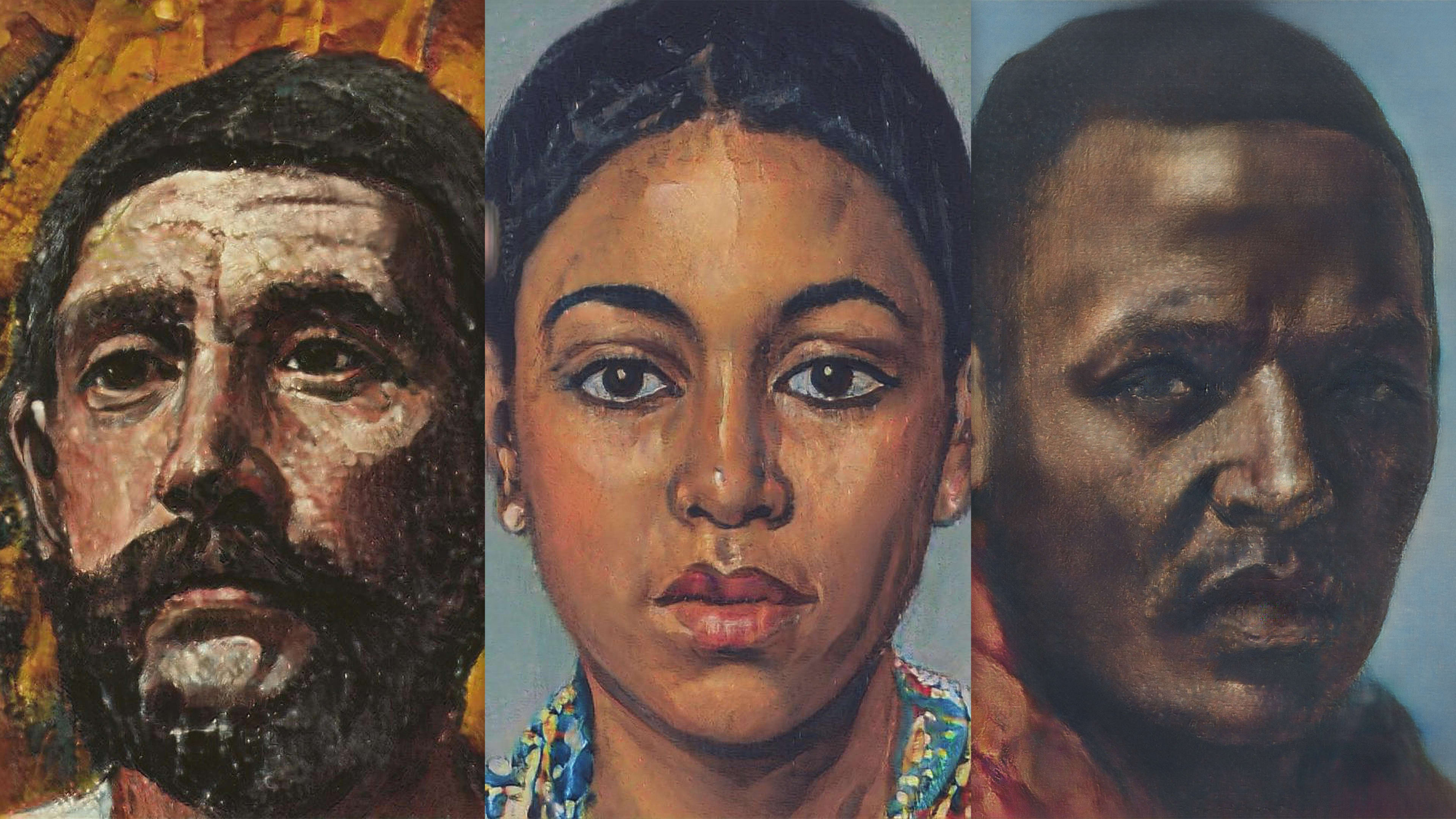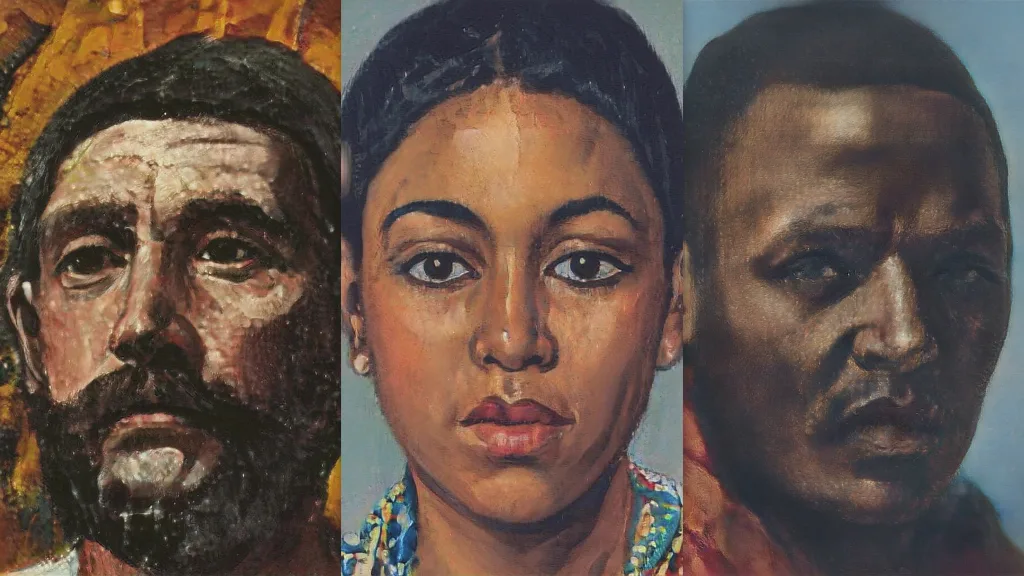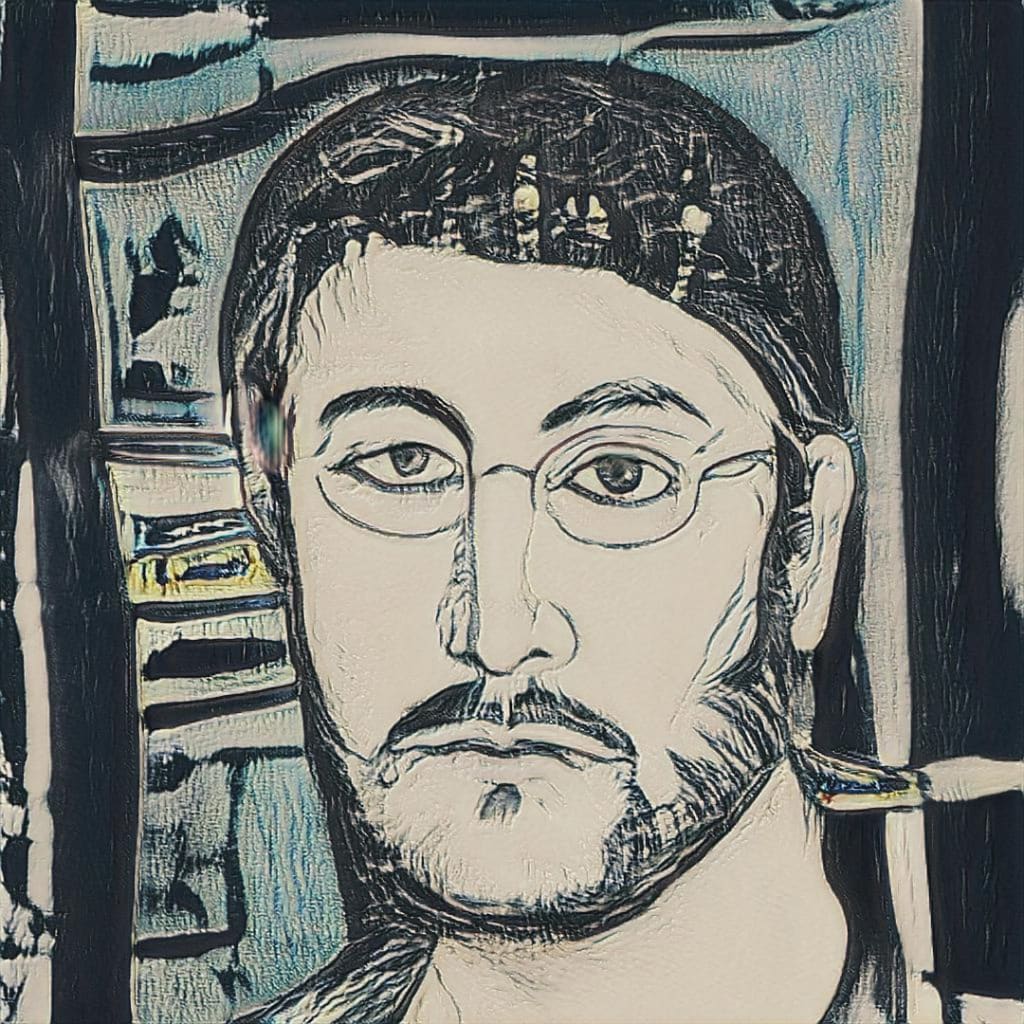Algorithms have become impressive painters. Many of the AI art projects that transform images into paintings use a technique known as style transfer, in which the algorithm copies surface-level, stylistic elements of a body of paintings over to a modern day photo.
But a new algorithm created by researcher Mauro Martino goes one step further by creating portraits entirely from scratch. Instead of style transfer, AI Portrait Ars uses a machine learning system called a generative adversarial network to conjure up new, Renaissance-like paintings that evoke your likeness. (A GAN is two competing algorithms that work together: one generates an image, and the other one compares how close that image is to the source image.) This AI isn’t just remixing previous paintings it has seen into something new: it’s directly inspired by a picture of you. On the project’s website, you can upload a photo of yourself, and the site generates a unique work of art that looks like it was painted by an old master, but with your face. All photos are immediately deleted from the project’s servers to protect users’ privacy.

Martino is the artist-in-residence at the MIT-IBM Watson AI Lab and a professor at Northeastern University. He and his collaborator Luca Stornaiuolo, a researcher at the Polytechnic University of Milan, trained the GAN algorithm on 45,000 portraits in the traditional style of Renaissance portraiture, where the subject is serious (though other more contemporary portraits are also included to make the algorithm’s artistic decisions more surprising).
On the website, Martino urges users to play around with the tool as a way to uncover some of the quirks of this specific genre of portraiture—for instance, if you input an image of a person who’s smiling or laughing, the tool likely won’t generate a painting with a smiling or laughing person. Why not? It wasn’t the style back then, as portrait painters thought overt expressions distorted the faces of their subjects, and laughing was associated with comic scenes more than portraits. “This inability of artificial intelligence to reproduce our smiles is teaching us something about the history of art,” Martino writes on the site.

You can scroll through the gallery of paintings the algorithm has created so far here. Many of the paintings look like classic Renaissance portraits, while others are more sketches, and some look more impressionistic. (In my case, the algorithm did not treat me kindly: When I uploaded a recent photo, the resulting image looked like a woman who might grace an old edition of a Jane Austen novel but without hair—my curls seemed to confuse the AI).
Why does one person get one painterly treatment, while another gets a different one? Martino doesn’t know, though he has some guesses: When the background is light colored, he thinks the algorithm tends to draw with pencil or ink, likely because it’s seen many similar portraits.
Previously, Martino created an algorithm that would ingest your image and transform it into how a celebrity might look, based on thousands of photos of celebrity faces. His experiments point toward democratization of AI art: rather than most AI artists, who play with their algorithms and then present fascinating (and disturbing) artistic creations, Martino is giving everyone a chance to actively work with an algorithm to create something that’s never been seen before.
Recognize your brand’s excellence by applying to this year’s Brands That Matter Awards before the early-rate deadline, May 3.

















